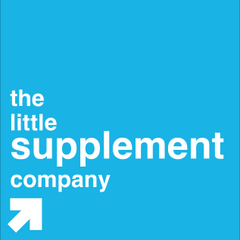In Pain? Here is some natural remedies that may help.
Posted by Mark Hamilton on
The A to Z of Natural Pain Remedies
Boswellia serrata shows anti-inflammatory action via inhibition of 5-lipoxygenase with no effectoncyclo-oxygenase. Arecentclinicalstudy revealed that Boswellia was able to reduce pain and swelling while increasing joint flexion and walking distance in patients with osteoarthritis of the knees.
Bromelain is helpful in healing injuries, particularly sprains and strains, bruising, muscle injuries, and the pain, swelling, and tenderness that accompany sports injuries.
Devil’s Claw shows good results in cases of osteoarthritis and in cases of lower back pain. Devils claw appears to work centrally or peripherally on the nervous system and has been found to be at least as effective as commonly used NSAIDs without harmful side effects.
Essential Fatty Acids rich in omega-3, such as flaxseed oil, are potent anti-inflammatory agents. Mediators derived from fatty acids named resolvins and protectins have anti-inflammatory and pro- resolution properties, thereby protecting organs from collateral damage, stimulating the clearance of inflammatory debris and promoting mucosal antimicrobial defence.
Feverfew, along with ginger and scutellaria, is one nature’s richest botanical sources of melatonin – a potent inhibitor of the COX-2 and 5-lipoxygenase enzyme process. It is also a rich source of the flavonoid Apigenin a potent arachidonic acid inhibitor. A combination of both white willow and feverfew has been shown to not only reducing the frequency of migraine attacks but also their pain intensity and duration.
Ginger not only safely modulates COX-2, but it also safely brings balance to the COX-1 enzyme activity in a manner that is vastly superior to the synthetic NSAIDS, like aspirin. There is substantial clinical experience with therapeutic doses of ginger and the alleviation of arthritic conditions and muscular discomfort.
Magnesium aids in pain relief through the relaxation of tissues throughout the body.
Pycnogenol produces analgesic effect in gynaecological disorders such as endometriosis and dysmenorrhea. It reduces menstrual cramps, abdominal pain and tenderness.
Quercetin has potent anti-inflammatory activity.
Turmeric (and the primary active, curcumin) reduces inflammation by lowering histamine levels and by increasing production of natural cortisone by the adrenal glands. A preliminary trial in people with rheumatoid arthritis found curcumin to be useful for reducing inflammation and symptoms suchaspainandstiffness. A separate double-blind trial found that curcumin was superior to placebo or phenylbutazone (an NSAID) for alleviating post- surgical inflammation.
Vervain is a herb that will strengthen and restore the nervous system whilst relaxing any tension and stress. It also exerts anti-spasmodic effects and can help reduce muscular spasm and reduce inflammation.
Vitamin B1 is an effective treatment for period pain taken at 100mg daily. It has been shown that thiamine possesses remarkable analgesic activities and also has significant anti-inflammatory effects, confirming its clinical use in controlling pain and inflammation.
Vitamin B2: A study involving 49 patients suffering from migraine used 400mg of riboflavin dailyforatleastthreemonths. Afterthethree months there was an overall improvement in 68% of the patients using riboflavin.
Vitamin B6: researchers have found that the combination of magnesium and vitamin B6 has significant effects on reducing anxiety-related premenstrual symptoms (nervous tension, mood swings, irritability, or anxiety).
Vitamin D deficiency is an epidemic problem with common manifestations including low back pain, proximal muscle weakness, muscle aches, and throbbing bone pain. Doses of 4000iu vitamin D per day for adults can reduce inflammation, alleviate musculo-skeletal pain, and ameliorate a wide range of health problems.
White Willow has significant effects in reducing low back pain and was free of adverse side effects. Improvements were noted in the first week of treatment. In 1838 chemists isolated salicylic acid in the bark of White Willow, creating aspirin.
Wood Betony has historically been used as a complete remedy for all maladies of the head and face, including neuralgia (nerve pain) and shingles. Wood Betony also feeds and strengthens the central nervous system and has a mild sedative action, aiding relaxation and sleep.
